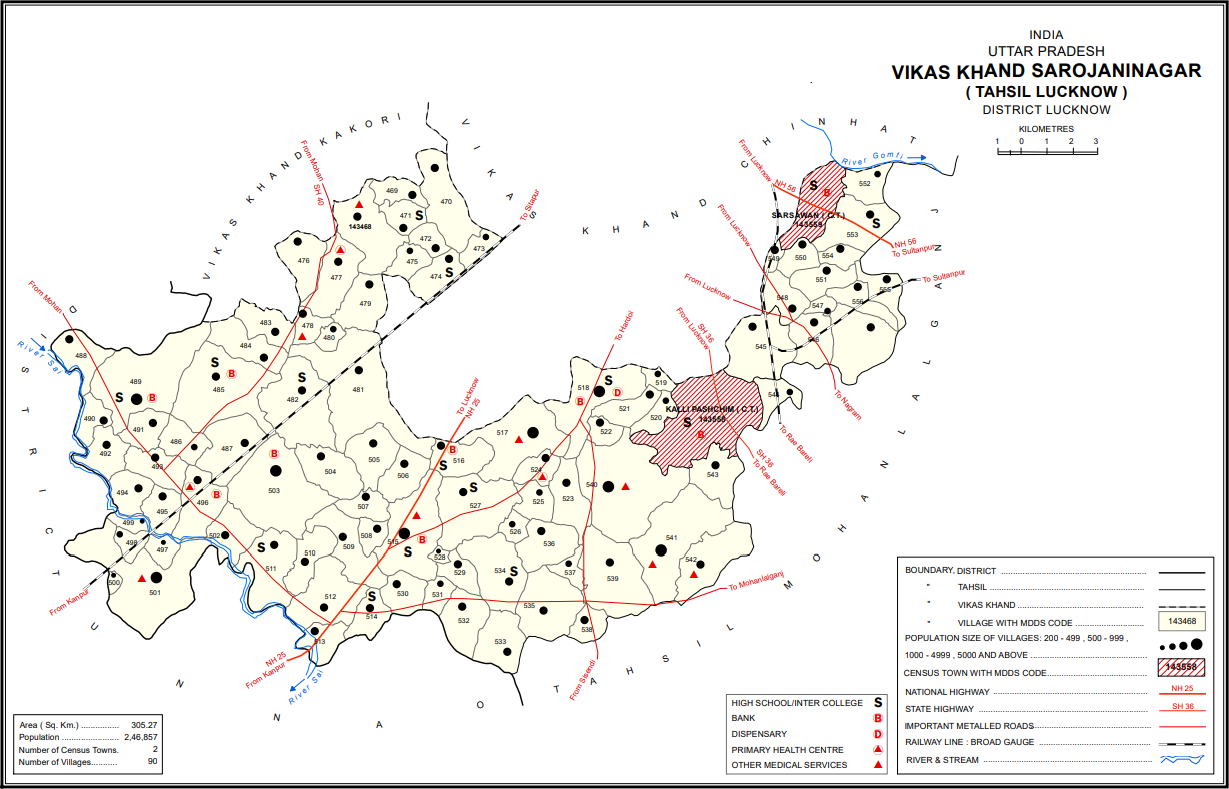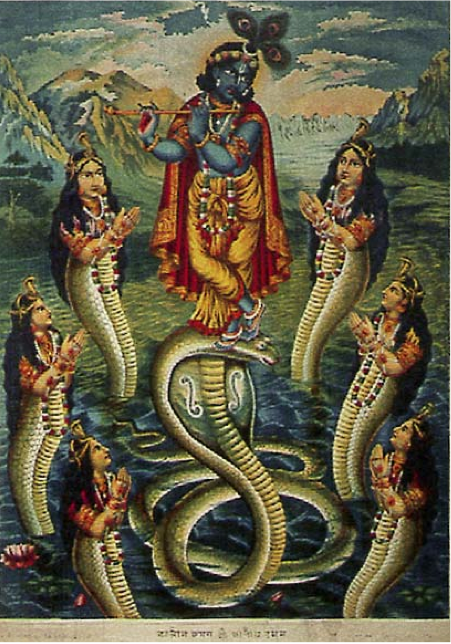|
Sarojaninagar
Sarojaninagar, also spelled Sarojini Nagar, is a community development block in Lucknow district, Uttar Pradesh, India. It is part of the tehsil of Lucknow and it includes 90 villages. As of 2011, its population was 224,045, in 40,923 households. Sarojaninagar is also the name of two wards of Lucknow, together making up 32 mohallas of the city. Demographics As of 2011, the sex ratio of Sarojaninagar block is 903 females for every 1000 males, with 53% of block residents (117,745) being male and 47% (106,300) being female. The sex ratio in the 0-6 age group was 920. Members of scheduled castes made up 37.2% of the Sarojaninagar block population, and members of scheduled tribes made up 0.11%. The literacy rate of Sarojaninagar block in 2011 was 73.0% (81.1% among males and 64.1% among females). In 2011, Sarojaninagar block's workforce consisted of 74,661 people (33.3% of the overall block population). More men (59,508, or 50.5%) were workers than women (15,153, or 14.3%). A pl ... [...More Info...] [...Related Items...] OR: [Wikipedia] [Google] [Baidu] |
Sarojaninagar Block Map
Sarojaninagar, also spelled Sarojini Nagar, is a community development block in Lucknow district, Uttar Pradesh, India. It is part of the tehsil of Lucknow and it includes 90 villages. As of 2011, its population was 224,045, in 40,923 households. Sarojaninagar is also the name of two wards of Lucknow, together making up 32 mohallas of the city. Demographics As of 2011, the sex ratio of Sarojaninagar block is 903 females for every 1000 males, with 53% of block residents (117,745) being male and 47% (106,300) being female. The sex ratio in the 0-6 age group was 920. Members of scheduled castes made up 37.2% of the Sarojaninagar block population, and members of scheduled tribes made up 0.11%. The literacy rate of Sarojaninagar block in 2011 was 73.0% (81.1% among males and 64.1% among females). In 2011, Sarojaninagar block's workforce consisted of 74,661 people (33.3% of the overall block population). More men (59,508, or 50.5%) were workers than women (15,153, or 14.3%). A plu ... [...More Info...] [...Related Items...] OR: [Wikipedia] [Google] [Baidu] |
Hectare
The hectare (; SI symbol: ha) is a non-SI metric unit of area equal to a square with 100-metre sides (1 hm2), or 10,000 m2, and is primarily used in the measurement of land. There are 100 hectares in one square kilometre. An acre is about and one hectare contains about . In 1795, when the metric system was introduced, the ''are'' was defined as 100 square metres, or one square decametre, and the hectare ("hecto-" + "are") was thus 100 ''ares'' or km2 (10,000 square metres). When the metric system was further rationalised in 1960, resulting in the International System of Units (), the ''are'' was not included as a recognised unit. The hectare, however, remains as a non-SI unit accepted for use with the SI and whose use is "expected to continue indefinitely". Though the dekare/decare daa (1,000 m2) and are (100 m2) are not officially "accepted for use", they are still used in some contexts. Description The hectare (), although not a unit of SI, i ... [...More Info...] [...Related Items...] OR: [Wikipedia] [Google] [Baidu] |
Alinagar Sonhara
Alinagar ("Ali city" in Indian languages) may refer to several places: * a short-lived name during the history of Kolkata, India, set in 1756 by the Bengali ruler Siraj ud-Daulah. ** Treaty of Alinagar The Treaty of Alinagar was signed on 9 February 1757 between Robert Clive of the British East India Company and the Nawab of Bengal, Mirza Muhammad Siraj Ud Daula. Alinagar was the short-lived name given to Calcutta given by the Nawab after it ..., signed in Kolkata in 1757 * Alinagar (Vidhan Sabha constituency), an electoral district in Bihar, India. * Alinagar, a union council in Beanibazar Upazila, Bangladesh. * Ali Nagar Roda, a village in Punjab, Pakistan. * Ali Nagar Pali, a village in Bihar, India. * Alinagar, a village in Jinnaram Mendal, Medak district, Telangana, India. * Alinagar, a village in Aonla, Uttar Pradesh, India {{Disambiguation, place ... [...More Info...] [...Related Items...] OR: [Wikipedia] [Google] [Baidu] |
Kaliya Khera
Kaliya (IAST: Kāliya, Devanagari: कालिय), in Hindu traditions, was a venomous Nāga living in the Yamunā river, in Vṛndāvana. The water of the Yamunā for four leagues all around him boiled and bubbled with poison. No bird or beast could go near, and only one solitary Kadamba tree grew on the river bank. The celebration of Nāga Nathaiyā or Nāga Nṛitya is associated with the tale of Lord Krishna dancing upon and subduing Kāliya. Story The story of Krishna and Kāliya is told in the sixteenth chapter of the Tenth Canto of the ''Bhagavata Purana''. The proper home of Kāliya was the island of Ramaṇaka, but he had been driven away from there in fear of Garuḍa, the foe of all serpents. Garuḍa had been cursed by the yogi Saubhari dwelling at Vrindavan so that he could not come to Vrindavan without meeting his death. Therefore, Kāliya chose Vrindavan as his residence, knowing it was the only place where Garuḍa could not come. Once, the sage Durv ... [...More Info...] [...Related Items...] OR: [Wikipedia] [Google] [Baidu] |
Pyare Pur
Pyār (Punjabi: ਪਿਆਰ ''pi'āra'') is the Punjabi and Hindi word for love. It is derived from Sanskrit priya (love) and kāra (act). It is one of the five virtues of Sikhism. See also * Five Virtues In Sikhism, the Five Virtues are fundamental qualities which one should develop in order to reach Mukti, or to reunite or merge with God. The Sikh Gurus taught that these positive human qualities were Sat (truth), Daya (compassion), Santokh ( ... References {{Reflist Sikh terminology ... [...More Info...] [...Related Items...] OR: [Wikipedia] [Google] [Baidu] |


